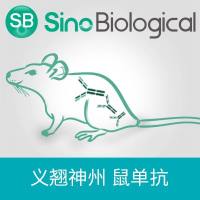Neuropeptide–plasma membrane interactions in the absence of a corresponding specific receptor may result in neuropeptide translocation
into the cell. Translocation across the plasma membrane may represent a previously unknown mechanism by which neuropeptides
can signal information to the cell interior. We introduce here two complementary optical methods with single-molecule sensitivity,
fluorescence imaging with avalanche photodiode detectors (APD imaging) and fluorescence correlation spectroscopy (FCS), and
demonstrate how they may be applied for the analysis of neuropeptide ability to penetrate into live cells in real time. APD
imaging enables us to visualize fluorescently labeled neuropeptide molecules at very low, physiologically relevant concentrations,
whereas FCS enables us to characterize quantitatively their concentration and diffusion properties in different cellular compartments.
Application of these methodologies for the analysis of the endogenous opioid peptide dynorphin A (Dyn A), a ligand for the
kappa-opioid receptor (KOP), demonstrated that this neuropeptide may translocate across the plasma membrane of living cells
and enter the cellular interior without binding to its cognate receptor.






